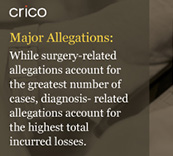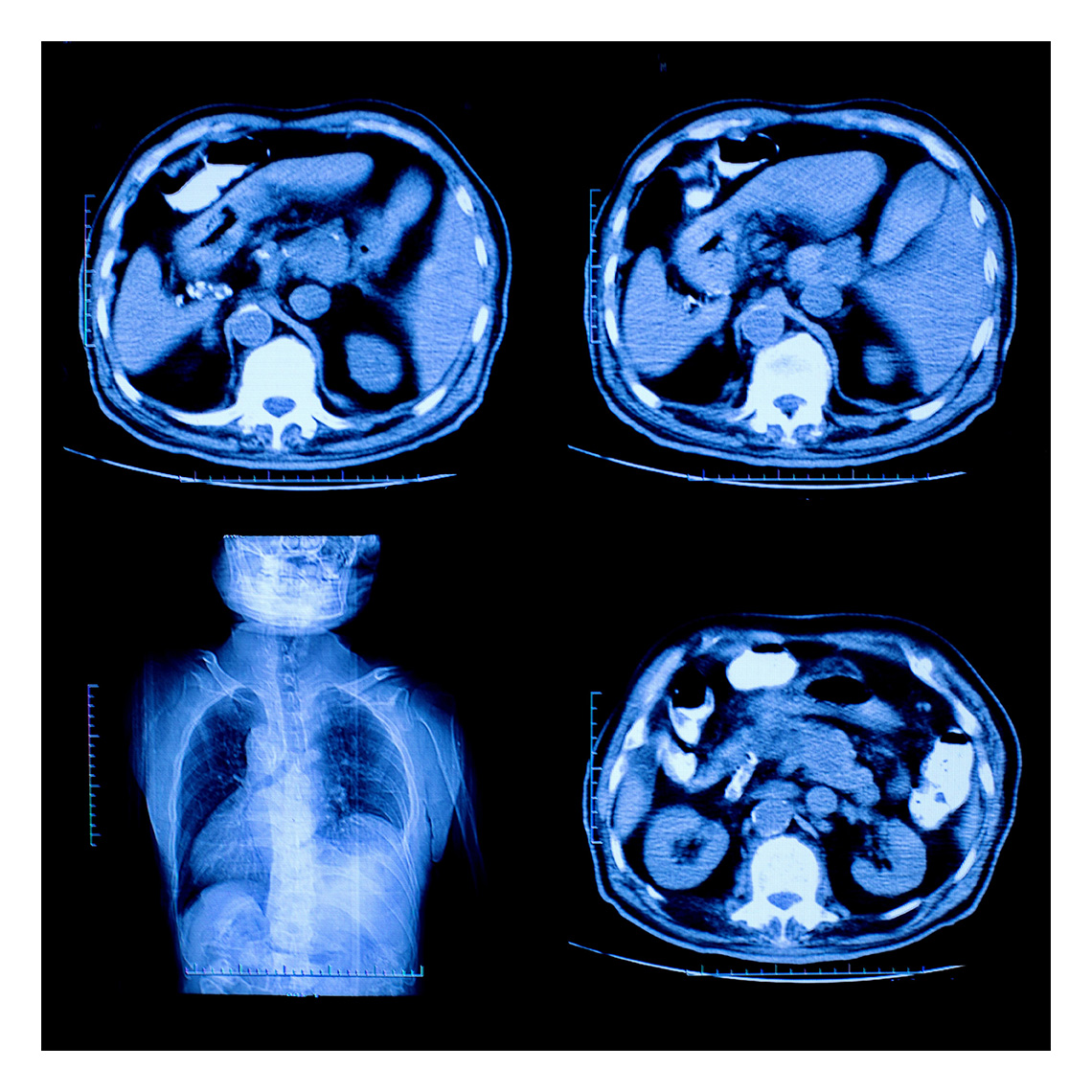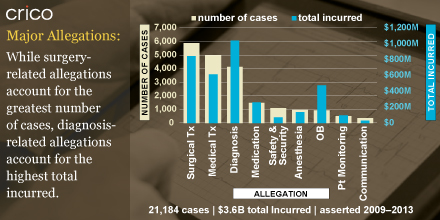Newsletter
Big (malpractice) Data
Aug 31, 2014

Claims filed with medical professional liability insurers and lawsuits alleging negligence by a health care provider—malpractice cases—divulge a rich source of patient safety risks and remedies, if you know how to mine and analyze the embedded information. Organizations that employ malpractice data analysis as a key component of their risk reduction strategy are more likely to raise awareness of leadership and hold the attention of providers being asked to implement solutions. As more members of the C-suite recognize the value of malpractice data, CRICO recognized the need to increase access to this robust resource to individuals on the patient safety front lines.
So CRICO is now making big malpractice data available to you.
Annually, CRICO collects extensive data from about 30 percent of the malpractice cases filed in the United States. These cases, about 10,000 are added each year, include those naming CRICO-insured providers and those submitted by clients of CRICO’s Strategies division. The data drawn from those cases are housed in the Comparative Benchmarking System (CBS). At present, CBS holds data from more than 325,000 malpractice cases fully coded by CRICO-trained clinical taxonomy specialists. The breadth of insurers contributing malpractice data to CBS, and the range of care settings those cases reflect, empowers a vast array of investigative approaches, including peer group comparisons, risk trending, and predictive analytics.
The CRICO methodology for extracting actionable data from malpractice cases has been honed over 35 years. We have developed a proprietary taxonomy and a coding process that captures facts and inferences from medical records, expert reviews, and legal documents (including depositions from plaintiffs and defendants). Each case is reviewed and coded at key intervals from the filing date to closing. As these data are integral to prioritizing and focusing patient safety initiatives, CRICO routinely audits case coding for consistency and accuracy and conducts bi-weekly educational sessions for the clinical coding specialists. Thus, the coded malpractice case data served to analysts and researchers is highly credible.
CRICO’s process reveals, at a fundamental level, the care-related factors that led a patient or family to file a particular case. It also enables analysts to study patterns of those contributing factors within sets of cases aggregated by organization, specialty, department, or any number of criteria. With that intelligence in hand, clinicians and patient safety leaders can arm themselves with sound data to spur or reinforce efforts to reduce the risk of patient harm and allegations of malpractice. By making CBS data more readily accessible to a bigger pool of researchers, authors, and patient safety project leaders, CRICO is aiming to accelerate improvement activity.
Additional Materials
Latest News from CRICO
Utilization of Electronic Health Record Sex and Gender Demographic Fields: A Metadata and Mixed Methods Analysis


The Safety of Outpatient Health Care
Characterizing Malpractice Cases Involving Emergency Department Advanced Practice Providers, Physicians in Training, and Attending Physicians


